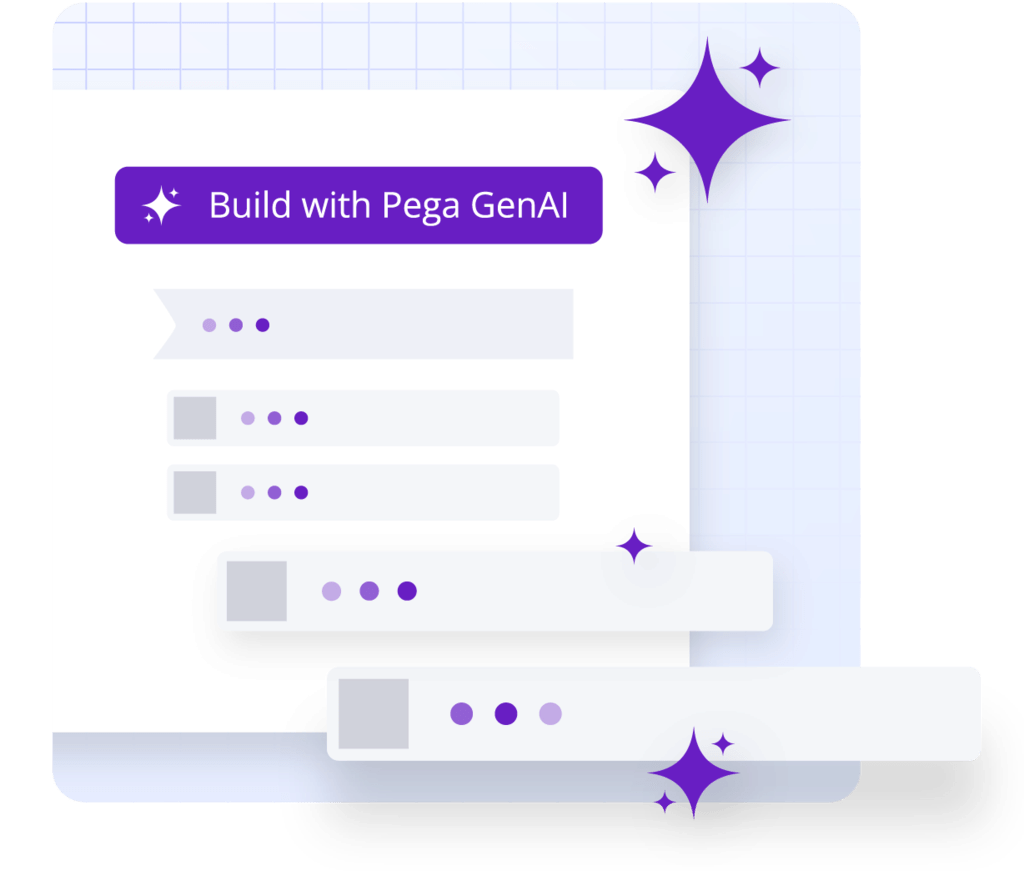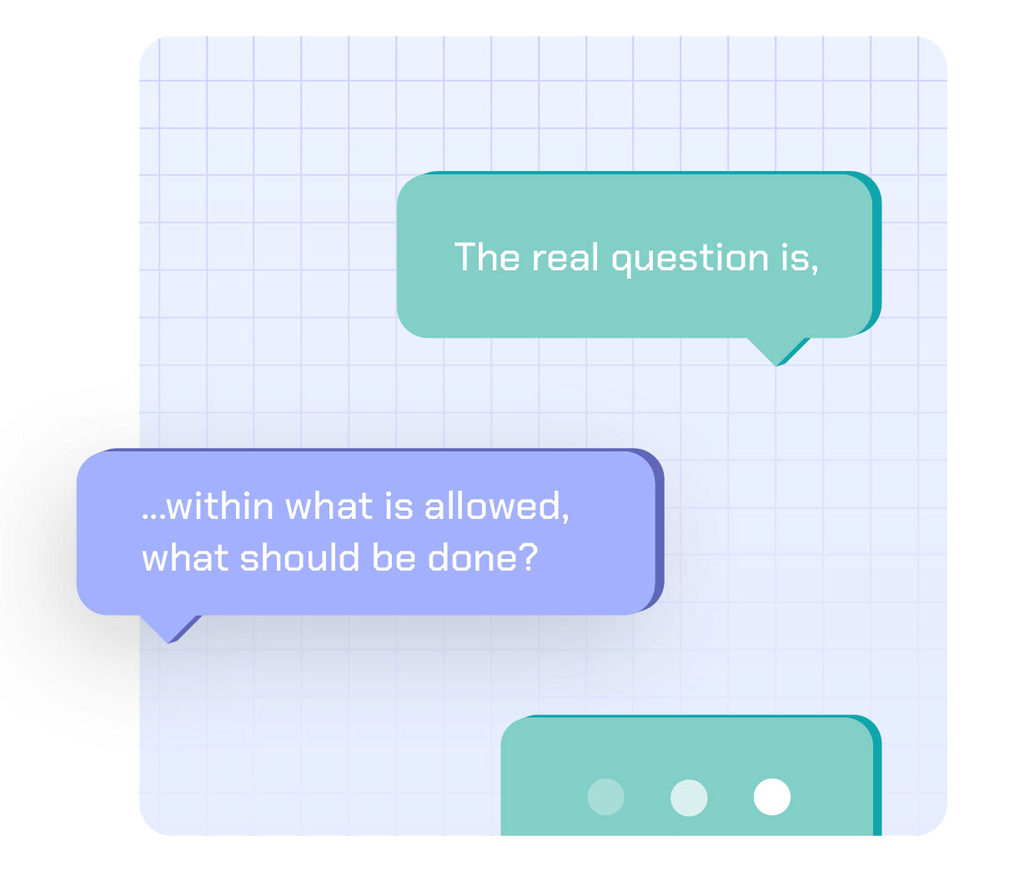
Meeting the
AI moment
Unleashing intelligence for limitless outcomes
Meeting the
AI moment
Unleashing intelligence for limitless outcomes

It seems like all of a sudden, AI is everywhere. But at Pega, it's been here all along.
As an AI-powered platform, decisioning is in our DNA. It’s small wonder, then, that Pega is the ideal environment for AI to thrive – where decisions and workflows live at the center. Silo-free. Solution-ready. And the enterprise-grade experts we look to? Well, they all work here. Here's how they think about practical application today – and how to drive business-defining outcomes tomorrow.
Hear the latest in AI from our experts
Dr. Rob Walker | How Self-optimizing AI is Changing Business | PWi '23 keynote
Don Schuerman | The Future of AI and Automation | PWi '23 keynote
Kerim Akgonul | Generative AI: Infinite Possibilities | PWi '23 keynote
AI for the Enterprise:
Unprecedented innovation meets best practices for a new age

Pega's AI Manifesto:
Pega's definitive guide to AI in the new era of partnership
Embracing AI strategically demands deep experience. Peter van der Putten, Director of Pega’s AI Lab, has written a definitive set of best practices, perspectives, and inspiration to help you build AI into your business – with pragmatism and responsibility.
Download the manifesto
Generative AI:
Harnessing the big bang
of enterprise productivity
Meet the innovation that’s changed everything. Armed with this fast-learning, content-producing superpower, you can turn concepts into operations, better engage with customers and unlock back-office capabilities that transform data into action. Pega has already built Gen AI into the core of our platform, powering productivity, enabling big ideas, and driving value. Go ahead and take a look.
Learn more about Pega GenAI
Responsible AI:
With great power comes
greater responsibility
AI needs guardrails. But you can design for responsibility and ethics. We wove responsibility into our products based on essential values: transparency, accountability, fairness, and above all, empathy. From ensuring that your AI is making decisions based on real-time context to offering transparency into Gen AI’s every action, built-in, human-focused guardrails provide an ethical, responsive compass that our customers trust.
Learn more about responsible AIThe autonomous enterprise:
Self-optimize everything
Imagine workflows that accelerate on their own. Or an exception that’s resolved before it even happens. Now imagine all this, at scale. This is the promise of the autonomous enterprise: a self-optimizing business that applies deeper levels of AI and workflow automation to every operation, customer interaction, and touchpoint, unlocking limitless value. And it’s ready for you, right now.
Learn morePega AI Lab
Learn more about innovation in AI through our thought leadership and media.

AI-Powered Decisioning
Unlock the power of AI to drive
better decisions, at scale.
Make every customer interaction, service operation, and workflow self-optimizing for the next best decision, every time.
Explore AI-powered decisioning
AI-Powered Decisioning
Unlock the power of AI to drive better decisions, at scale.
Make every customer interaction, service operation, and workflow self-optimizing for the next best decision, every time.
Explore AI-powered decisioning








